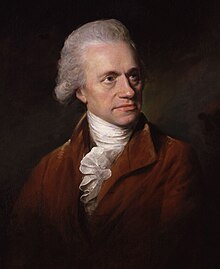| Solar cycle 3 | |
|---|---|
| Sunspot data | |
| Start date | June 1775 |
| End date | September 1784 |
| Duration (years) | 9.3 |
| Max count | 264.3 |
| Max count month | May 1778 |
| Min count | 12.0 |
| Cycle chronology | |
| Previous cycle | Solar cycle 2 (1766–1775) |
| Next cycle | Solar cycle 4 (1784–1798) |

Solar cycle 3 was the third solar cycle since 1755, when extensive recording of solar sunspot activity began.[1][2] The solar cycle lasted 9.3 years, beginning in June 1775 and ending in September 1784. The maximum smoothed sunspot number observed during the solar cycle was 264.3 (May 1778), and the starting minimum was 12.0.[3]
William Herschel began observing sunspots during this period.[4]
See also[edit]
References[edit]
- ^ Kane, R.P. (2002), "Some Implications Using the Group Sunspot Number Reconstruction", Solar Physics, 205 (2): 383–401, Bibcode:2002SoPh..205..383K, doi:10.1023/A:1014296529097
- ^ "The Sun: Did You Say the Sun Has Donuts?". Space Today Online. Retrieved 12 August 2010.
- ^ SIDC Monthly Smoothed Sunspot Number. "[1]"
- ^ Vaquero, J.M.; Vázquez, M. (2009). The Sun Recorded Through History. Springer. p. 79. ISBN 0387927905.

Well, that’s interesting to know that Psilotum nudum are known as whisk ferns. Psilotum nudum is the commoner species of the two. While the P. flaccidum is a rare species and is found in the tropical islands. Both the species are usually epiphytic in habit and grow upon tree ferns. These species may also be terrestrial and grow in humus or in the crevices of the rocks.
View the detailed Guide of Psilotum nudum: Detailed Study Of Psilotum Nudum (Whisk Fern), Classification, Anatomy, Reproduction